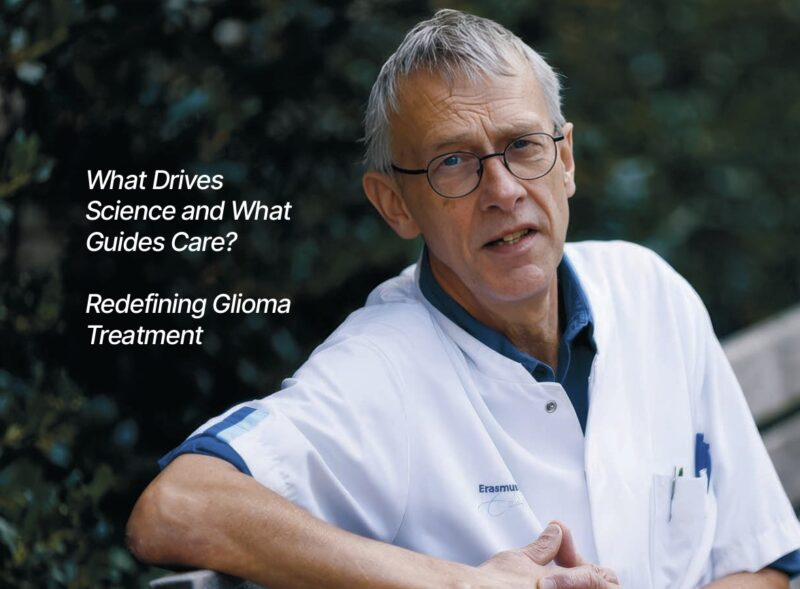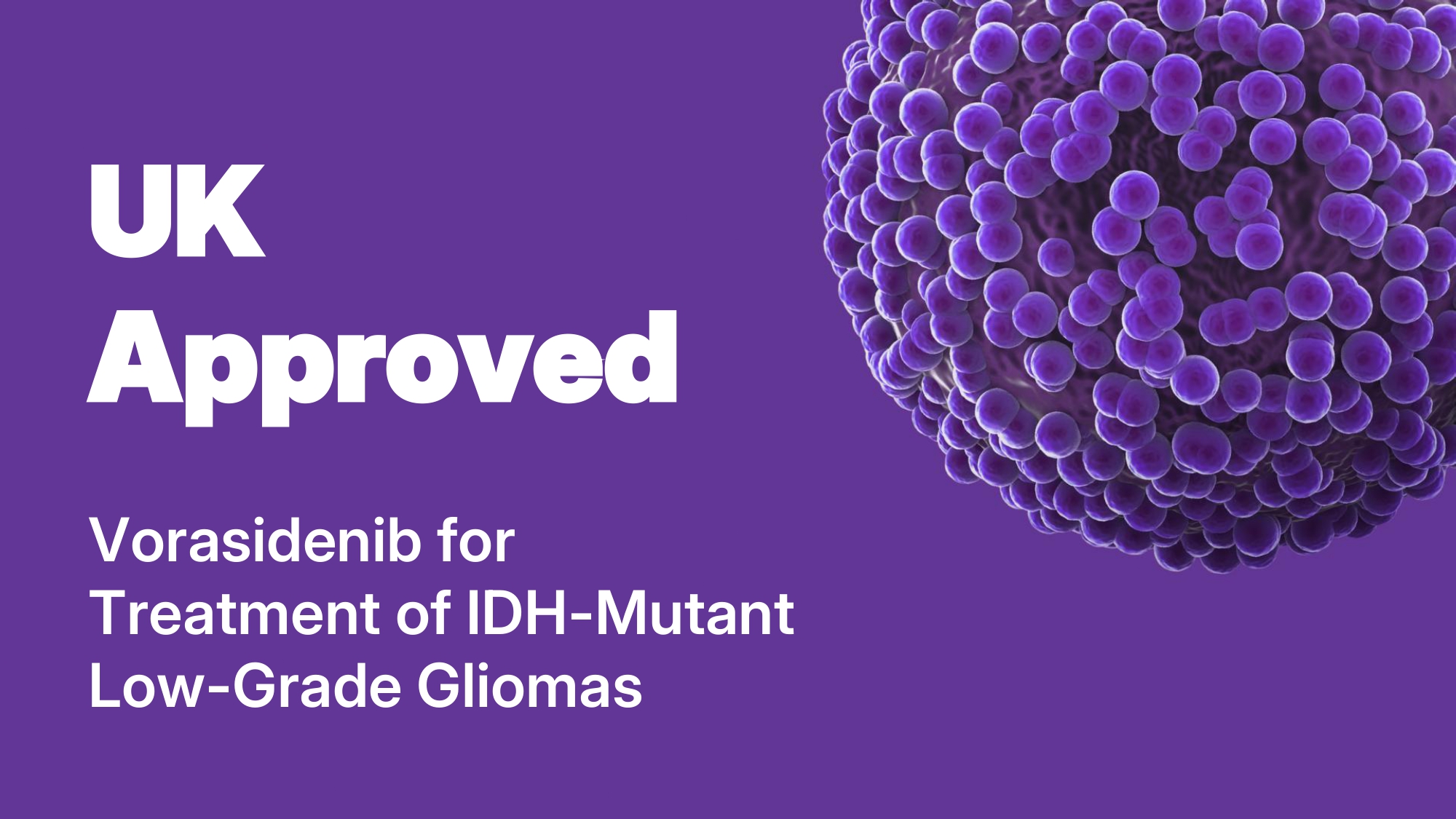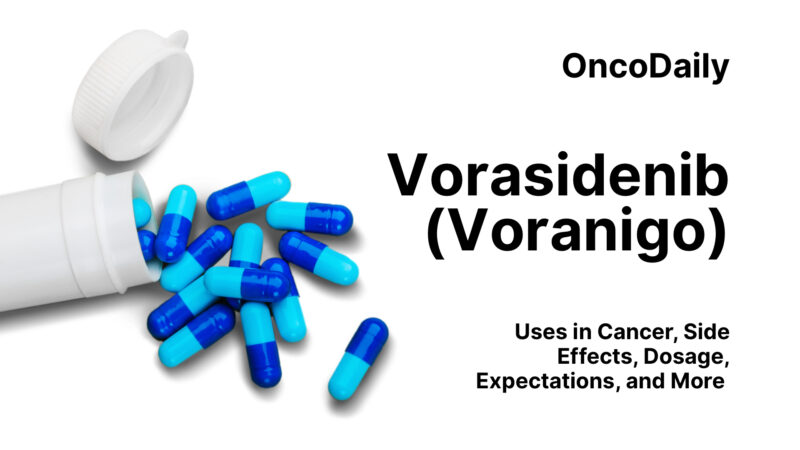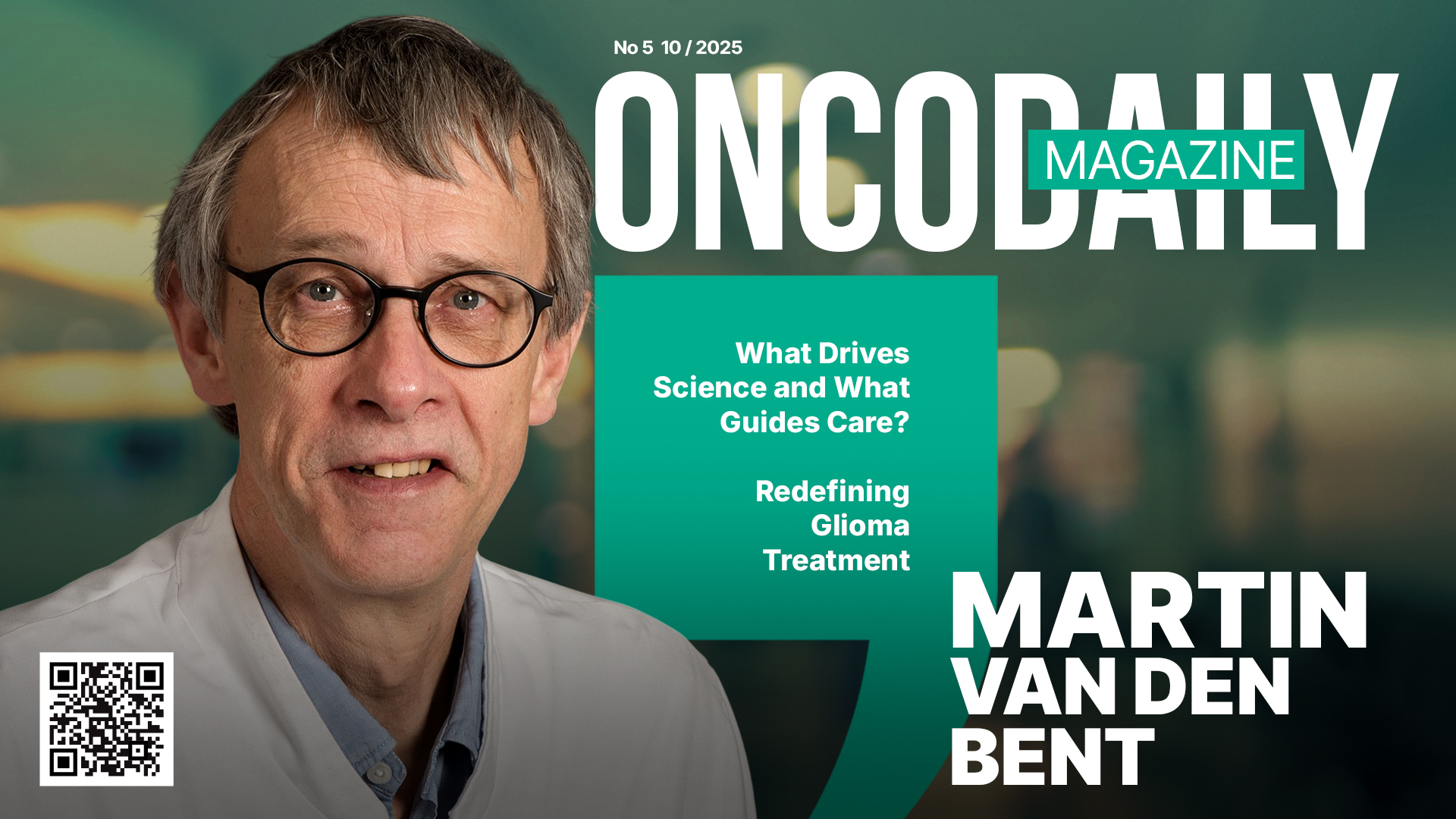Martin van den Bent on the Long Arc of Neuro-Oncology – and Why Vorasidenib Changes the Sequence
In the cover story of OncoDaily Magazine’s October issue, Prof. Martin van den Bent reflects on the latest advancements and practice-changing insights in neuro-oncology, sharing lessons from decades of experience, advice for young clinicians, and take-home messages from the clinic.
“I thought I’d stay for one or two years.”
Martin van den Bent didn’t set out to become a neuro-oncologist. He trained as a neurologist in Rotterdam, attracted by the puzzle of the nervous system. During residency he saw patients with brain tumors and walked across town to the cancer hospital “for a year or two” to learn more. He never left.
“Patients were operated on and radiated. There was very little medical treatment, and very little understanding. That’s what kept me there.”
Over the next 35 years at Erasmus MC he built a brain-tumor program that would anchor European trials and change guidelines. The practical obstacle, at first, was not science but skepticism.
“One of the biggest challenges was the unbelief by neurosurgeons. They felt chemotherapy was a bad thing. Convincing them to send patients was hard.”
The geography of Rotterdam helped: the radiotherapy center was the referral hub. Patients came anyway; when disease progressed after radiation, they found their way to van den Bent’s group. A program took shape.
Early proof that chemotherapy matters
The first inflection point came from clinical observation. Reports from Canada suggested oligodendrogliomas could respond to chemotherapy. Rotterdam tried the same regimen and saw “really dramatic responses.”
“Those early responses keep you on the track. They make you stop and design proper trials.”
Two program-defining studies followed. The EORTC’s adjuvant PCV plus radiation trial for oligodendroglioma, and later a four-arm study adding temozolomide during and after radiation. Both changed practice – and because the tissue had been banked, both later taught who benefits, when, and why.
“When you collect samples well, the questions you can answer ten years later are the ones that matter then – not necessarily the ones you had at the start. So, you can understand, you cannot expect a young resident to deliver results in two to three years in this field. Sometimes it’s ten or more. Staying with a topic is how breakthroughs come.”
The new chapter: why vorasidenib is different
If the first half of van den Bent’s career was about adding effective chemotherapy to radiation to prolong survival, the current chapter is about ensuring quality life rather than survival.
He traces that shift to 2008, when the IDH mutation was recognized as a hallmark dividing favorable- and poor-prognosis gliomas. The mutation rewires tumor metabolism; within a few years, medicines existed that could inhibit the altered enzyme. The usual oncology playbook would have started late, in third- or fourth-line disease.
A new drug by Servier came with a bold argument: If you give the drug very early, can you keep patients off radiation and chemotherapy?
“The dependency on the IDH mutation is most pronounced early. So instead of going late, they shifted gears, as opposed to the classical approach in oncological trials… instead of going back to late-stage disease, they went to frontline disease for patients with whom we would use the so-called watch and wait policy.”
The trial that followed compared vorasidenib, a dual inhibitor of mutant IDH1/2 enzymes, with placebo in patients often managed with “watch and wait” after surgery. The readout, as he explains it, is clear in direction and clinically meaningful:
“Median progression-free survival for placebo was about 12 months. For vorasidenib it is well beyond 24 months, and we still don’t know the median.”
What matters isn’t just a Kaplan-Meier curve. It is everything that doesn’t happen to the patient in those first years: cognitive slowing, memory problems, fatigue; the slow attrition that pushes people out of work and out of noisy rooms.
“Having a brain tumor is like having two diseases—the cancer and the neurological effects. Postponing radiation and chemotherapy preserves quality of life in a way we have not achieved before.”
What comes next will test where vorasidenib optimally sits: maintenance after chemoradiation; combination with radiation and temozolomide; and, crucially, how early treatment influences the long game.
“We need long-term follow-up – 10 to 20 years. We’re setting up registries. Many of these patients can live a very long time; we must learn how early IDH inhibition shapes overall survival and subsequent therapies.”
He’s equally clear on process. Before a phase III, the company ran a window study, comparing candidates head-to-head in resected tumors, checking drug levels in tissue and downstream signaling. The story of vorasidenib is also a story of process.
“The company compared compounds in a window study, checked drug levels in tumor tissue, checked downstream signaling. That phase-0 logic was pivotal. You don’t want to run a huge trial and then learn the drug never reached the tumor.”
Where progress has stalled – and may restart
Against the optimism of IDH-mutant disease stands glioblastoma.
“Since the 2005 temozolomide paper, we have not made a lot of progress. Targeted agents failed. PD-1 and PD-L1 inhibitors failed.”
Why?
“We need to overcome the immunosuppressive environment of glioblastoma. That is the key challenge. Many groups are working on it, but we are not there yet.”
Here, too, he insists on smarter early-stage trials:
“Phase-0 and window-of-opportunity trials are not a luxury in glioblastoma; they are a necessity. First ask: does the drug get there, and does it do what we think it does? Then scale.
… Success has many fathers, but failure is an orphan. The reason I am considered successful is because some trials were positive. But when we started, we never knew. People put the same effort into negative trials.”
He recalls mistakes: missed diagnoses, trial designs that collapsed under feasibility issues. Yet he views them as part of the scientific arc.
Access, diagnostics, and the LMIC reality
Progress risks deepening inequity if access lags.
“Everything in oncology starts with the right diagnosis. Molecular classification is moving fast, but not every lab can do it. Immunohistochemistry can still carry you far; and there are initiatives using AI on digitized slides to bridge gaps. But drug cost is the other barrier. If medicines are too expensive, patients won’t access them. This is what we keep seeing with the new drugs.”
His message to industry is direct: keep affordability in mind when bringing drugs to markets where patients cannot pay high prices.
Science across borders (and the bureaucracy that follows)
International collaboration made much of his work possible – and sometimes impossible.
“Early in my career being introduced to EORTC was pivotal. We could never have run these studies in the Netherlands alone. The EORTC gave us the scale. That’s the platform where we did the important studies.
Eventually, we’ve run trials across Australia, North America, Europe. And we’ve watched other collaborations collapse under changing regulations. One response is to run mirrored databases on both sides of the Atlantic and harmonize questions rather than shipping all data one way.”
How care enables research

“You cannot do good research if your care isn’t well organized. We built a program where patients have continuity with the same physician and nurses play a pivotal role. That’s the model I would want for myself.”
His mentorship philosophy is pragmatic and kind and, in his words, it has matured with time:
“Early on I was critical, pointing out what was wrong. Later I learned it’s more effective to tell people what goes well…
And not everyone has to do research. If you do, pick a topic and stay with it. Don’t expect results in two or three years. You need time. And you have to tell your residents today that it’s okay to need time.
These are more important, I think… At least people thanked me for that during my retirement party. It could well be that they said it just because I was going out, but I think they were genuine.”
What progress looks like up close
For all the realism, he has seen enough to resist cynicism.
“People say nothing has changed. That’s not true. Surgery is better – safer and more extensive. Radiation is more precise; less normal brain gets low-dose exposure. We understand chemotherapy better. I’ve followed some patients 20 years. I’ve told others, after five years, that I don’t expect their tumor to return. That did not happen ten years ago.”
The story of vorasidenib is the latest chapter – a reordering of the sequence, allowing patients to live longer without toxic therapies. Yet he knows the work is not finished.
“We are not curing gliomas yet. But we are moving the line – and for some patients, that line now includes the life they hoped to keep living.
What keeps me optimistic is working with people who try to improve outcomes for patients. I see residents, colleagues across Europe, and groups like RANO pushing the field forward. It’s inspiring to see their motivation. That gives me hope.”
For Prof. Martin van den Bent, the message is simple: progress in neuro-oncology may be incremental, but when carried by collaboration and persistence, those increments add up to lives changed.
Life outside the clinic
The center of gravity is ordinary, and chosen.
“Family, grandchildren, a cat, cycling, walking. At the end of the day, family life is more important than what you do for a living.”
Books that have marked his thinking
All Men Are Mortal (Simone de Beauvoir)
“One book as a young boy that taught me a lot is a book from Simone de Beauvoir which is called All Men Are Mortal. Everybody is mortal. It’s a very important book because it tells you about the relevance of mortality for the human life.”
The Dark Room of Damocles (Willem Frederik Hermans)
“There was another book which is about the Second World War. If I would translate it, it would be The Dark Room of Damocles. It is about our inability to fully understand historical events – what’s really happening. There are so many perspectives, and often the riddle never gets completely solved.”
Hobbes and Locke for the architecture of civil society.
“They’re books, the American people should read to understand why their constitution was a step forward – and what it takes to keep it.”
Advice he gives – advice he lives by
- Be flexible. Jump on opportunities when they come.
- Failure and success are judged backwards. Success has many fathers; failure is an orphan.
- You cannot do good research if your care isn’t well organized.
- Stay attached to what you’re doing. Keep focused.
What drives science? Your care. What guides your care? Science.
by Elen Baloyan, MD – Managing Editor, OncoDaily.
Science Box: Exloring Vorasidenib

Vorasidenib and IDH-Mutant Gliomas
Vorasidenib (Voranigo) is the first oral, brain-penetrant dual inhibitor of the mutant IDH1 and IDH2 enzymes. In healthy cells, these enzymes, isocitrate dehydrogenases 1 and 2, help generate energy, but when mutated—as in 70–80% of grade 2 gliomas—they produce an oncometabolite called 2-hydroxyglutarate (2-HG). Excess 2-HG disrupts normal epigenetic regulation, blocks cell differentiation, and drives tumor growth. By selectively blocking mutant IDH1/2, vorasidenib lowers 2-HG levels, restoring more normal cellular processes and slowing tumor progression. Its ability to cross the blood–brain barrier makes it especially suited for gliomas, which arise in the central nervous system.
On 22 September 2025, the European Commission approved Voranigo for use in the EU as the first targeted therapy for grade 2 IDH-mutant glioma. This approval applies to adult and adolescent patients (12 years +, ≥ 40 kg) with non-enhancing residual disease after surgery.
Beyond Europe, Voranigo also holds marketing authorization in the U.S., Canada, Australia, Israel, the UK, Japan, Switzerland, Brazil, and other countries, with ongoing submissions elsewhere.
The INDIGO Trial
The pivotal Phase 3 INDIGO trial enrolled 331 patients with IDH-mutant grade 2 astrocytomas and oligodendrogliomas, who had undergone surgery but no prior chemotherapy or radiotherapy. Patients were randomized to receive daily vorasidenib or placebo. Results were striking: median progression-free survival more than doubled (27.7 vs. 11.1 months), and the need for radiotherapy or chemotherapy was significantly delayed. Safety was manageable, with liver enzyme elevations as the most common laboratory finding. For patients – often young adults for whom long-term side effects of standard therapy are a major concern – this was the first targeted option able to postpone toxic treatments while maintaining disease control.
Servier, an independent international pharmaceutical group headquartered in France, reinvests all its profits into research and innovation through its unique nonprofit governance model. Today, oncology is its top priority, with nearly 70% of its R&D budget dedicated to cancer research. The company’s ambition to become a leading player in rare cancers was underscored in 2025, when the European Commission approved Voranigo (vorasidenib) – developed by Servier – as the first targeted therapy for grade 2 IDH-mutant gliomas.
Read also:
Vorasidenib (Voranigo): Uses in Cancer, Side Effects, Dosage, Expectations, and More

